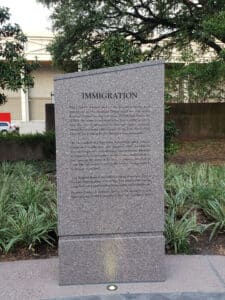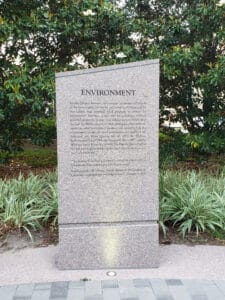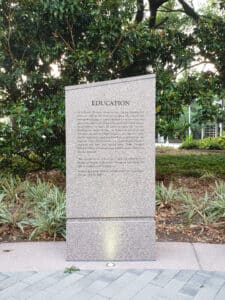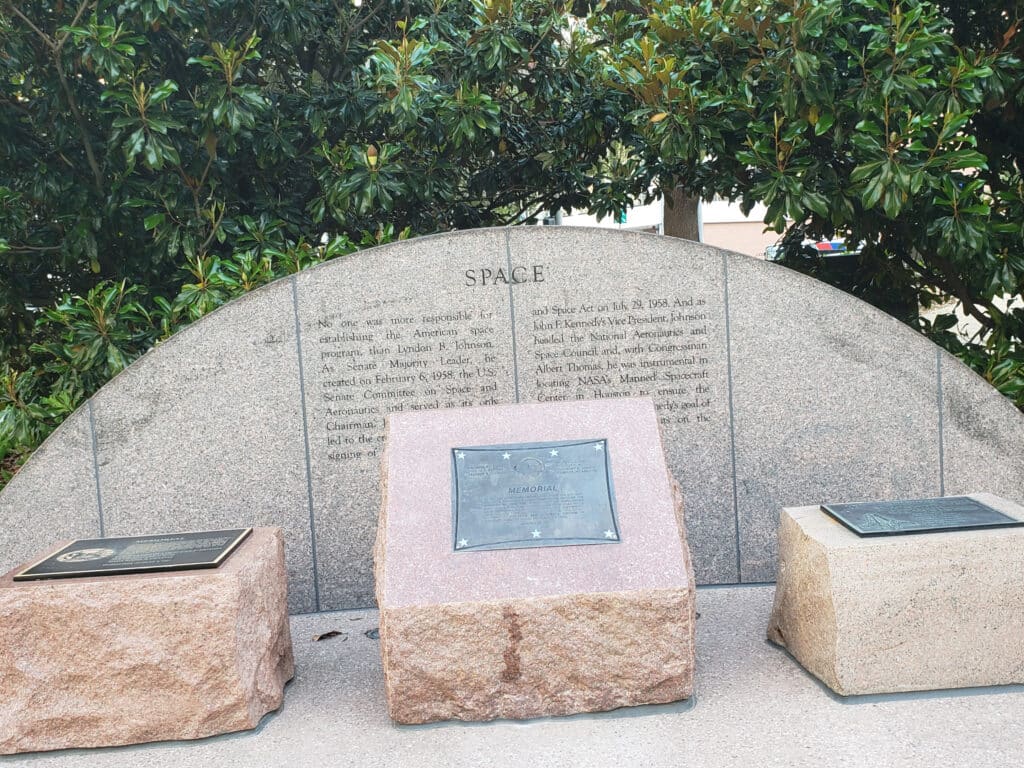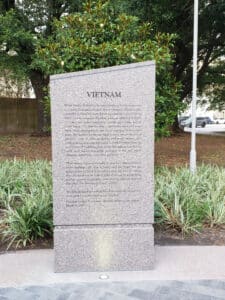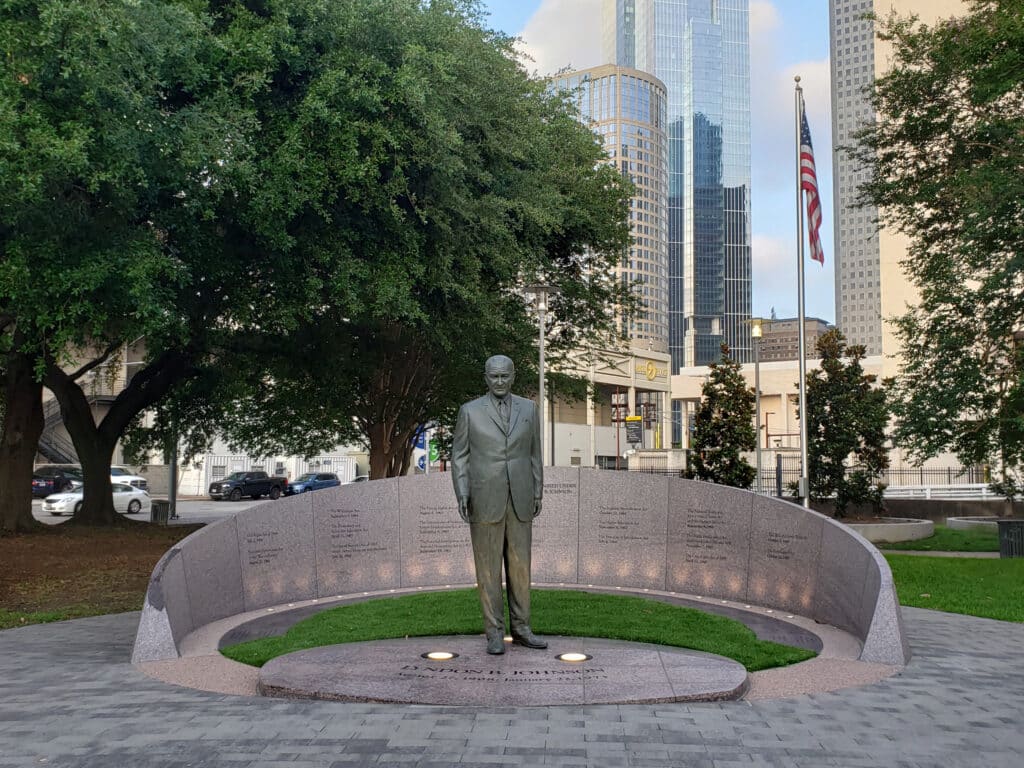
Walking or cycling along the Buffalo Bayou is a fun and unique way to spend a few hours on your weekend. Not only do you get to experience the Houston skyline, but you also get to see how Houston has grown from marshland into a bustling metropolis. If you’re from out of town, you may also notice Houston’s diversity. Today, Houston is one of the most diverse cities in the United States, but it wasn’t always that way. In fact, back when Lyndon B. Johnson lived in Houston, the city was overwhelmingly white, and English was the primary language spoken.
As you walk, you begin to wonder what could fuel such drastic change in such a brief period. In less than 60 years, Houston became the fourth largest city in the nation. It also became a minority-majority city, where no single racial group represents the majority of the local population. Houston’s economy has also experienced considerable growth and is home to important companies and organizations like NASA, Hewlett Packard, and Chevron. It also has the largest medical center in the world.
As you reach downtown, you pass several interesting monuments to famous people with roots to Houston including President George Bush, Baker Common and Lyndon B. Johnson. The Lyndon B. Johnson monument holds the answer to part of these questions.
Lyndon B. Johnson and his connection to Houston.
Johnson was born in 1908 in Stonewall, Texas, and he grew up in the small town of Johnson City. He attended public schools in Johnson City and Austin. He then went on to study at Southwest Texas State Teachers College, now known as Texas State University.
While studying, Johnson ran into financial problems which made him take a temporary leave from college and accept a teaching position at Welhausen School in Cotulla, a small town on the Mexican border with Texas. His classes were primarily composed of poor non-English speaking children of Mexican farmers. Because Johnson lacked Spanish translation skills, he was unable to communicate with students in Spanish. Despite this challenge, Johnson pushed his students to learn English by holding speech and debate tournaments.
Eventually, Johnson returned to college and earned degrees at the University of Texas and later the University of Michigan. After graduation, he came back to Texas and taught at Port Arthur and later moved to Houston, where he served as the head of the history department at Sam Houston High School. While living in Houston, Lyndon Baines Johnson taught public speaking at a local high school. In his spare time, Johnson also enjoyed reading and spending time with his family.
Lyndon Baines Johnson was an effective public speaker who enjoyed reading and spending time with his family while living in Houston. His ability to captivate an audience and communicate his message clearly made him a successful teacher at a local high school. In his spare time, Johnson liked to read books and spend time with his loved ones.
After teaching for a brief time, Johnson moved to Washington, D.C., to work as a Congressional aide. He then returned to Texas to run for Congress. He was elected to the House of Representatives in 1937 and served there until 1949, when he was elected to the Senate. Johnson became Senate Majority Leader in 1955, and he played a key role in getting legislation passed during his time in office.
Lyndon B. Johnson as President
Lyndon B. Johnson was elected Vice President as John F. Kennedy’s running mate: back then, Vice Presidents were elected by vote instead of being appointed like they are now. Then, in 1963 after President Kennedy was tragically assassinated, Lyndon B. Johnson assumed office as the 36th president of The United States of America. His tenure began on November 22, 1963, following JFK’s assassination and ended January 20, 1969, when Nixon came into power.
During his tenure as POTUS, many momentous pieces of legislation were passed that are still highly relevant to our country today. Here are some examples.
Civil Rights
The Civil Rights Act of 1964 was a groundbreaking law that ended discrimination against African Americans and ensured their right to vote. The Voting Rights Act of 1965 extended these protections to all citizens, regardless of race. And the Civil Rights Act of 1968 made it illegal to discriminate based on race, color, religion, sex, or national origin. Today, these laws are still protecting the rights of everyone in America.
Immigration
The Immigration and Naturalization Act of 1965 revolutionized the McCarran–Walter Act. It retained elements from the 1924 statute, while also introducing progressive immigration laws that offered a fresh start to those who had been barred citizenship before. This monumental legislation allowed immigrants to pursue their aspirations in America – enabling families to remain together here, as well as doing away with biased quotas since the Roaring Twenties. These changes dramatically altered United States demographics for years after it was passed into law.
Environment
The Wilderness Act of 1964, the Water Quality Act of 1965, the Highway Beautification Act of 1965, and the Air Quality act of 1967 were all game changers for our nation. They set a precedent that still stands today – that we value our natural resources and want to protect them for future generations. The Wild and Scenic Rivers Act of 1968 was another groundbreaking law that helped preserve some of America’s most beautiful waterways.
Education
In 1965, President Lyndon B. Johnson made an incredibly bold move to pass the Elementary and Secondary Education Act, revolutionizing educational opportunities for millions of Americans regardless of their socioeconomic backgrounds. By opening doors that may have otherwise been shut tight, this act has had a life-changing impact on students over the last 50+ years! Research has proven that those who benefited from this federal support often achieve higher academic success compared to their peers without such aid. As someone who grew up in limited circumstances, I am deeply inspired by President Johnson’s commitment to fairness and opportunity – it proves how much can be accomplished with determination and dedication.
The Elementary and Secondary Education Act is a shining example of what communities can do when dedicated individuals come together for meaningful causes like education reform; tangible results that directly benefit people throughout our communities are attainable – whether they be children or adults alike!
Furthermore, the LBJ administration created the Head Start program which has been providing essential early childhood services to those with fewer resources since 1965. This initiative works hard to ensure children enter school equipped with all necessary tools for success—both present and future! In addition to academics, Head Start also focuses on proper nutrition as well as social services that build resilience against adversity. Even more impressive is its legacy of enrichment that lives on today; recent studies show participants in Head Start programs had higher high school graduation rates than those without this intervention – an incredible testament considering we’re talking about 50+ years after the LBJ administration established these resources! So let us thank President Lyndon B. Johnson for his forward-thinking legislation which continues to make a difference in students’ lives today!
NASA-Space exploration and research
Lyndon B. Johnson played a key role in establishing NASA’s Spacecraft Center in Houston. This center would later become known as the Johnson Space Center. Johnson’s involvement ensured that Houston would become a hub for space exploration and research. The Johnson Space Center has been responsible for some of the greatest achievements in space flight, and it continues to play a vital role in the ongoing exploration of our solar system. The Lyndon Baines Johnson Space Center, which is one of the largest employers in the city. The space center is responsible for training astronauts and conducting research on space exploration.
Vietnam War
Johnson believed that if South Vietnam fell to communism, other neighboring countries would soon follow. So, to contain communism, he sent American troops to Vietnam. This decision led to one of the most controversial and costly wars in American history. Although the war was deeply unpopular, Johnson continued to escalate American involvement, ultimately sending over 500,000 troops to Vietnam. Despite his best efforts, the war ended in a stalemate, and America withdrew from Vietnam in 1973. The public’s dissatisfaction with the war led Johnson to make the decision not to seek reelection.
How Lyndon B. Johnson’s legacy continues to influence Houston today
Lyndon Baines Johnson had a deep affection for Houston, and it shows in the city’s continuing prosperity. He was a tireless advocate for Houston, working hard to secure federal funding and resources that would help transform it into the thriving metropolis we know today. His Great Society programs not only built the renowned Houston Freeway System, but also created the Lyndon B. Johnson Space Center – now one of Houston’s biggest employers. His legacy lives on at The Lyndon B. Johnson School of Public Affairs at the University of Texas at Austin, preparing students for careers in public service and arming them with the tools they need to make positive change in the world. And then there’s the LBJ Hospital: an international beacon of quality healthcare right here in Houston. It is clear that LBJ left behind a lasting impact on Houston and beyond.
You can learn more about these accomplishments by visiting The Lyndon Baines Memorial located just a short walk from the train near Eleanor Tinsley Park in Downtown Houston.
The Lyndon Baines Johnson Monument in downtown Houston
The Lyndon Baines Johnson Monument in downtown Houston is a towering sculpture of three larger-than-life bronze figures. The monument, which was created by world-renowned artist and Houstonian sculptor James Surls, stands as a testament to President Johnson’s dedication to diversity. The three figures in the monument represent different aspects of President Johnson’s life and legacy. The first figure is a young boy, representing President Johnson’s childhood in the small town of Johnson City, Texas. The second figure is a man in his prime, representing President Johnson’s years as a United States Senator and as the President of the United States. The third figure is an older man, representing President Johnson’s later years as a retired political leader.
How the LBJ Monument stands for diversity in Houston
The monument is also inscribed with some of President Johnson’s most famous quotes, including “The American Dream is not a reality until it includes everyone,” and “We shall overcome.” These quotes remind us that President Johnson was a champion for diversity and inclusion, and that his legacy continues to inspire people from all walks of life.
Getting to the LBJ Monument in Houston
Little Tranquility Park – LBJ Monument
Location: 701 Brooks St, Houston, TX 77009
Directions (15 minutes / .7 Miles): From the Buffalo Bayou Park Cistern, travel south along Sabine St. and follow the Buffalo Bayou Trail east, crossing under Gulf Frwy/I45. Follow the trail and cross the Hobby Center Pedestrian Bridge. Follow the north passing Rusk St. until you reach Capital St. Turn right (east) on Capital Street until you reach Baby St. Little Tranquility Park is located on the corner of Bagby St. and Capitol St. The LBJ Monument is located inside Little Tranquility Park.
Location of monument: https://goo.gl/maps/hPx6ZzJhNQXCRpjVA
FAQs
October 17, 2019, the city of Houston held a special groundbreaking ceremony that was attended by Houston’s mayor, Sylvester Turner, and civic leaders Luci Baines Johnson and Charles C. Foster. Also in attendance was Gensler lead architect CK Pang.
The Lyndon B. Johnson Monument officially opened in 2020.
The Lyndon B. Johnson monument was built with the help of generous donations from many different foundations. The Brown Foundation of Houston contributed $250,000 to the project, and other donors such as the Cullen, HEB, Hobby and Sarofim Foundations also gave generously. Thanks to their support, this important memorial was constructed and now stands as a tribute to Lyndon B. Johnson.
In 1930, during the Great Depression, LBJ moved to Houston to teach public speaking at Sam Houston HS. While there, he lived with his aunt and uncle at 435 Hawthorne St., in the Westmoreland Historic District of Houston, TX. The house is a beautiful example of early 20th century architecture, and it is well-preserved today.
The people of Houston remember Lyndon B. Johnson as a great President who improved civil rights and made it easier for immigrants to come to the United States. He passed many important laws during his time in office, including three major Civil Rights bills. His work made an enormous impact on Houston and helped make America become a better place for everyone.


